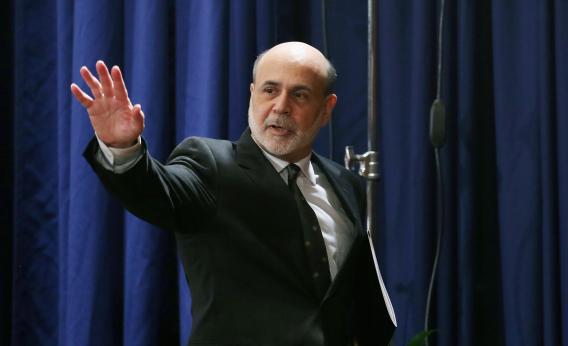Today’s just-released January minutes of the Fed’s Open Market Committee don’t contain much news, but they do give us further clarity on the hazy thinking that continues to restrain monetary stimulus. Here’s a key paragraph describing dissention within the FOMC with my interruptions:
The Committee again discussed the possible benefits and costs of additional asset purchases. Most participants commented that the Committee’s asset purchases had been effective in easing financial conditions and helping stimulate economic activity, and many pointed, in particular, to the support that low longer-term interest rates had provided to housing or consumer durable purchases. In addition, the Committee’s highly accommodative policy was seen as helping keep inflation over the medium term closer to its longer-run goal of 2 percent than would otherwise have been the case.
A question to ask here is what is the meaning of “highly accommodative” policy if the policy leaves unemployment high and medium term inflation below the Fed’s longer-run goal of 2 percent? It’s not a technical term of art, just a phrase Ben Bernanke has been using for the past few years. But what does it accommodate if the outcomes it’s associated with are the outcomes—high unemployment and low and stable inflation—that you associate with an aggregate demand shortfall? We continue:
Policy was also aimed at improving the labor market outlook. In this regard, several participants stressed the economic and social costs of high unemployment, as well as the potential for negative effects on the economy’s longer-term path of a prolonged period of underutilization of resources. However, many participants also expressed some concerns about potential costs and risks arising from further asset purchases. Several participants discussed the possible complications that additional purchases could cause for the eventual withdrawal of policy accommodation, a few mentioned the prospect of inflationary risks, and some noted that further asset purchases could foster market behavior that could undermine financial stability.
Inflationary risks is an interesting subject to ponder in this regard. It is presumably true that if the Federal Reserve undertook action designed to bring the inflation rate all the way up to its target level, that this would increase the risk of the inflation rate going above the target level. The way to safely ensure that you never go above target is to stay below target. But that’s not what a “target” is. If you’re targeting 2 percent, then you should be above 2 percent as often as you’re below it. The idea of complications for the withdrawal of “policy accommodation” seems to me to be similar. The idea is that taking steps to avoid resting below target might make it harder for the Fed to get back to target if the Fed accidentally overshoots. This, again, is a way of saying that many FOMC members actually aren’t targeting 2 percent inflation. They’re treating it as a ceiling.
Several participants noted that a very large portfolio of long-duration assets would, under certain circumstances, expose the Federal Reserve to significant capital losses when these holdings were unwound, but others pointed to offsetting factors and one noted that losses would not impede the effective operation of monetary policy. A few also raised concerns about the potential effects of further asset purchases on the functioning of particular financial markets, although a couple of other participants noted that there had been little evidence to date of such effects. In light of this discussion, the staff was asked for additional analysis ahead of future meetings to support the Committee’s ongoing assessment of the asset purchase program.
The minutes say it all here. There’s no evidence that these things are problems. The empirical evidence that prolonged spells of mass unemployment lead to demoralization and de-skilling of the workforce and a reduction in the American capital stock, by contrast, is overwhelming. The FOMC continues to be unwilling to deliver monetary policy capable of meeting its own stated goals, and and is doing so on the basis of very hazy concerns and worries.
